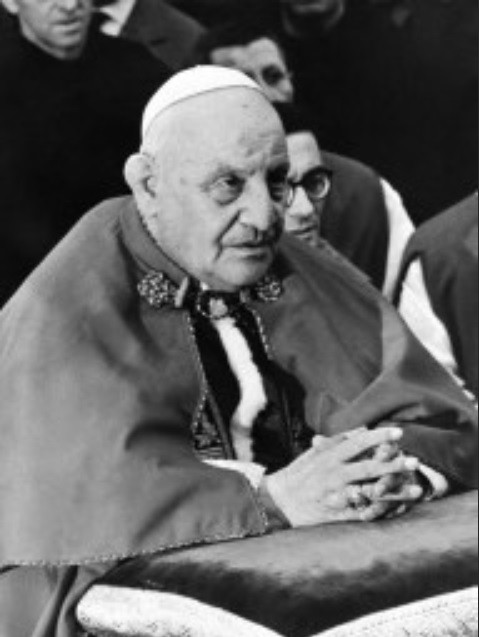John XXIII: A reformist pope like Francis
VATICAN CITY — Pope John XXIII, who will next year be made a saint with John Paul II, surprised many by leading the Catholic Church to more open relations with the world.
When “Good Pope John” became head of the Catholic Church on October 28, 1958 at the age of 77, many thought he would be a simple caretaker.
He had a determined and progressive character, however, inviting comparisons by Vatican watchers to the reform-minded Pope Francis.
Less than three months after being elected, John XXIII announced preparations for the Second Vatican Council, a rare global gathering of Catholic bishops, which opened in October 1962.
Pope John did not live to see the end of the council, dying on June 3, 1963 of complications linked to stomach cancer less than two months after he completed the landmark papal encyclical, Pacem in Terris (Peace on Earth).
Article continues after this advertisementIt was addressed “to all men of good will” and not only Catholics, and was in part a reaction to the prevailing political situation in the midst of the Cold War.
Article continues after this advertisementThe Vatican Council led to major reforms within the church, including greater participation by lay members in the liturgy and the possibility of celebrating mass in languages other than Latin.
“I wish to open the church’s window so that we may see what is happening outside and so the world may see what is happening within,” pope John wrote.
The man who would be pope was born Angelo Giuseppe Roncalli in Sotto il Monte, northern Italy on November 25, 1881.
Ordained in 1904, he was called to Rome in 1921 to head missionary activities in Italy.
Appointed bishop four years later, he began a diplomatic career that took him to Bulgaria, Turkey and France.
In 1953 he became a cardinal and Patriarch of Venice, and was elected as pope five years later following the death of Pius XII.
As pope he worked hard to improve relations between the Catholic Church and other Christian faiths, notably Anglicans, Eastern Orthodox and Protestants.
He also laid a foundation for improved relations with Jews, a continuation of efforts made while serving as an apostolic delegate to Turkey during World War II.
He is said to have helped save thousands of refugees and a document on file at the Yad Vashem Holocaust memorial cites the future pope as being “among the most sensitive to the Jewish tragedy and most vigorous in rescue efforts”.
Pope John was beatified in August 2000, based on the healing of an Italian nun, sister Caterina Capitani, which was declared a miracle after a medical commission determined there was no scientific explanation for the event.
Capitani had undergone an operation to remove a cancerous tumor in her stomach and was not expected to live, but appeared to suddenly recover after addressing her prayers to pope John.
He was beatified by then pope John Paul II, who will also be made saint this year alongside John XXIII, and who pursued pope John’s outreach to Jews with an historic visit to the Wailing Wall in Jerusalem in March 2000.
John Paul II said at the time of John’s beatification that he had shown “a singular goodness of soul” and “left in the memory of all the image of a smiling face and two arms open to welcome the entire world.”
RELATED STORIES
Vatican sets April 2014 for historic two-pope sainthood
John Paul II: Poland’s soon-to-be new saint
